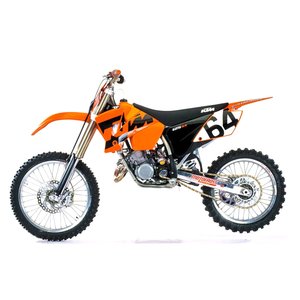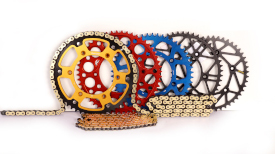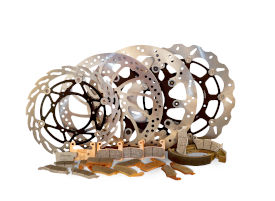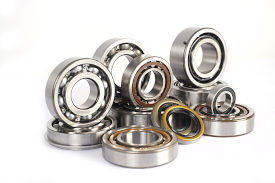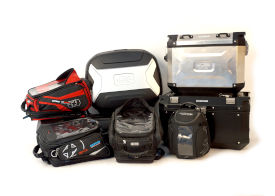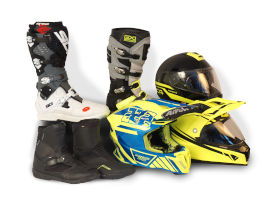KTM 125 SX (2004-2006): A Two-Stroke Motocross Legend Revisited
Introduction
The early 2000s were a golden era for two-stroke motocross bikes, and the KTM 125 SX (2004-2006) stands out as a razor-sharp contender in the 125cc class. Designed for riders who crave lightweight agility and explosive power delivery, this Austrian machine remains a favorite among motocross purists. With its signature orange frame, cutting-edge WP suspension, and a snarling two-stroke engine, the 125 SX was built to dominate tracks—and it still holds up today. Let’s dive into what makes this generation a timeless choice for adrenaline junkies and weekend warriors alike.
Engine and Performance: The Heart of a Predator
Power Delivery That Demands Respect
At the core of the KTM 125 SX lies a 124.8cc liquid-cooled single-cylinder two-stroke engine, a configuration that’s pure motocross theater. The 2004-2005 models feature a 5-speed gearbox, while the 2006 variant upgrades to a 6-speed transmission, offering better versatility for tight corners and long straights.
Revving this engine feels like waking a sleeping dragon. The Keihin PWK 39 carburetor ensures crisp throttle response, and the two-stroke’s signature “hit” arrives around 8,000 RPM, catapulting the bike forward with a burst of adrenaline. Riders must work the clutch and gears aggressively to stay in the powerband—a rewarding challenge for skilled pilots but intimidating for novices.
The liquid cooling system keeps temperatures in check during grueling motos, a critical advantage over air-cooled competitors. With a bore x stroke of 54.0 x 54.5 mm (2.1 x 2.1 inches), the engine prioritizes high-RPM performance, producing roughly 33-35 horsepower. That’s enough to loft the front wheel in third gear and keep pace with modern four-strokes on technical tracks.
Handling and Suspension: Precision Meets Brutality
Chassis: Lightweight and Laser-Focused
KTM’s chromium molybdenum frame is a masterclass in minimalist design. The 2004-2005 models use a single-cradle setup, while the 2006 version adopts a central double-cradle frame for improved rigidity. With a dry weight of just 92.4 kg (203.7 lbs) in later years, the 125 SX feels like an extension of your body—flickable mid-air and razor-sharp in rutted corners.
WP Suspension: Track-Ready Out of the Box
The WP-USD 48mm forks (1.89 inches) up front and WP-PDS rear shock deliver plush yet controlled damping. With 300 mm (11.8 inches) of front wheel travel and 335 mm (13.2 inches) at the rear, this bike soaks up braking bumps and landings with ease. The PDS (Progressive Damping System) rear suspension eliminates linkage, reducing weight and simplifying maintenance—a hallmark of KTM’s “no-bullshit” philosophy.
Brakes and Wheels: Confidence Under Pressure
The 260 mm (10.2-inch) front disc and 220 mm (8.7-inch) rear disc (2006 model) provide ample stopping power, though aggressive riders might crave more bite. Pairing sintered brake pads (available at MOTOPARTS.store) with fresh fluid transforms these brakes from adequate to race-ready.
Ergonomics and Comfort: Built for Attack
Seat Height: Tall but Manageable
At 925 mm (36.4 inches), the seat height is intimidating for shorter riders, but the narrow chassis and 675 mm (26.6-inch) alternate seat setting (if adjusted) help mitigate this. Standing up feels natural thanks to a 1471 mm (57.9-inch) wheelbase that balances stability and agility.
Fuel and Weight: Trade-Offs for Performance
The 7.5-liter (1.98-gallon) fuel tank is typical for the class but requires frequent pit stops during endurance races. Fortunately, the lightweight design—93.6 kg (206.4 lbs) in 2004—means you’ll fatigue less quickly than on heavier four-strokes.
Competition: How the KTM 125 SX Stacks Up
Honda CR125R (2004-2007)
Honda’s CR125R is smoother and more forgiving, with a broader powerband. However, its Showa suspension lacks the WP’s adjustability, and the steel frame feels heavier in choppy sections.
Yamaha YZ125 (2005-2023)
The YZ125 is the 125 SX’s fiercest rival. Its six-speed transmission (post-2005) and legendary reliability make it a crowd favorite. Yet the KTM counters with a hydraulic clutch (2005-2006) and superior stock suspension settings.
Suzuki RM125 (2004-2007)
Suzuki’s RM125 shines in tight corners with its nimble chassis, but the KTM’s two-stroke “hit” is more explosive, and the PDS rear suspension outperforms Suzuki’s linkage system on hard landings.
Maintenance: Keeping the Beast Alive
Two-Stroke Simplicity
The 125 SX’s air-cooled simplicity is a blessing for home mechanics. Key maintenance tips:
1. Top-End Rebuilds: Every 20-30 hours for racers; 40-50 hours for casual riders.
2. Air Filter Care: Clean after every ride—critical with the Keihin carb’s appetite for airflow.
3. Suspension Servicing: Rebuild WP forks/shocks annually for consistent performance.
MOTOPARTS.store Upgrades
- High-Compression Pistons: Boost mid-range power without sacrificing reliability.
- Aftermarket Exhausts: Swap the stock aluminum pipe for a tuned expansion chamber.
- Gripper Seat Covers: Essential for maintaining control during hard acceleration.
Conclusion: Why the 2004-2006 KTM 125 SX Still Matters
This generation of the KTM 125 SX isn’t just a relic—it’s a testament to the raw thrill of two-stroke motocross. Whether you’re blasting through sand whoops or slicing inside lines, its combination of brutal power, featherweight handling, and bulletproof WP suspension makes it a timeless track weapon.
For riders who value mechanical simplicity and the sweet scream of a two-stroke, the 125 SX remains a top pick. And when it’s time to rebuild, upgrade, or personalize, MOTOPARTS.store has everything you need to keep this orange beast dominating the dirt.
Specifications sheet
| Engine | |
|---|---|
| Stroke: | Two-stroke |
| Fuel system: | Keihin PWK 39 carburettor |
| Displacement: | 125 ccm |
| Bore x stroke: | 54.0 x 54.5 mm (2.1 x 2.1 in) |
| Configuration: | Single |
| Cooling system: | Liquid |
| Lubrication system: | Mixture oil lubrication 1:40 |
| Number of cylinders: | 1 |
| Dimensions | |
|---|---|
| Wheelbase: | 1471 mm (57.9 in) |
| Dry weight: | 92 |
| Seat height: | 925 mm (36.4 in) adjustable to 675 mm (26.6 in) |
| Ground clearance: | 390 mm (15.4 in) |
| Fuel tank capacity: | 7.5 L (1.98 US gal) |
| Drivetrain | |
|---|---|
| Clutch: | Hydraulically operated wet multi-disc |
| Final drive: | chain |
| Transmission: | 5-speed (2004-2005), 6-speed (2006) |
| Maintenance | |
|---|---|
| Engine oil: | 2-stroke oil (pre-mix 1:40) |
| Break fluid: | DOT 4 (assumed) |
| Chassis and Suspension | |
|---|---|
| Frame: | Central double-cradle-type 25 CrMo4 (2006) / Chromium molybdenum (2004-2005) |
| Rear tire: | 100/90-19 |
| Front tire: | 80/100-21 |
| Rear brakes: | Single disc |
| Front brakes: | Single 260 mm (8.7-10.2 in) disc |
| Rear suspension: | WP-PDS-DA shock absorber (2004-2005) / WP-PDS shock absorber (2006) |
| Front suspension: | WP-USD 48 mm (1.89 in) |
| Rake (fork angle): | 27.0° |
| Rear wheel travel: | 335 mm (13.2 in) |
| Front wheel travel: | 300 mm (11.8 in) |



